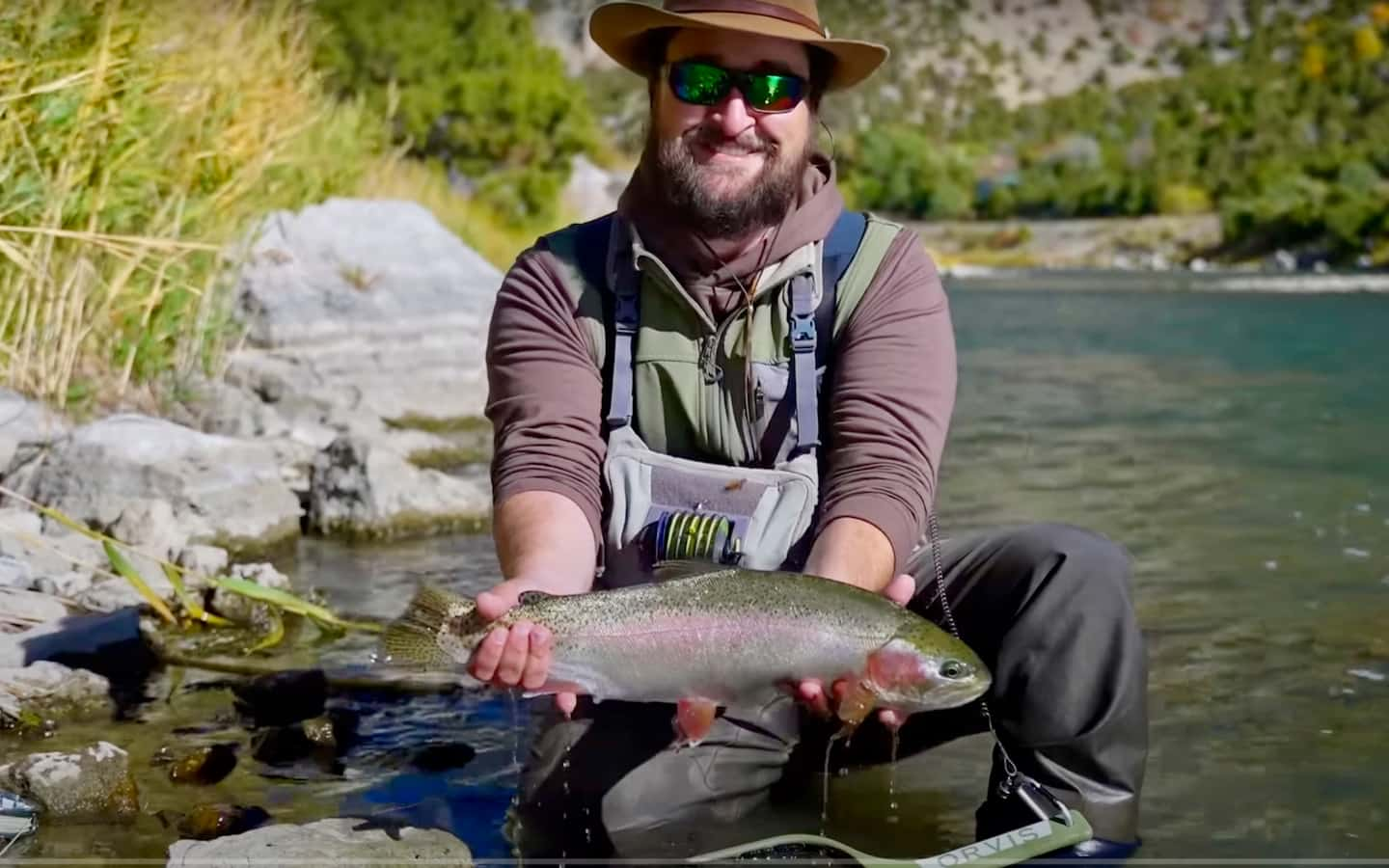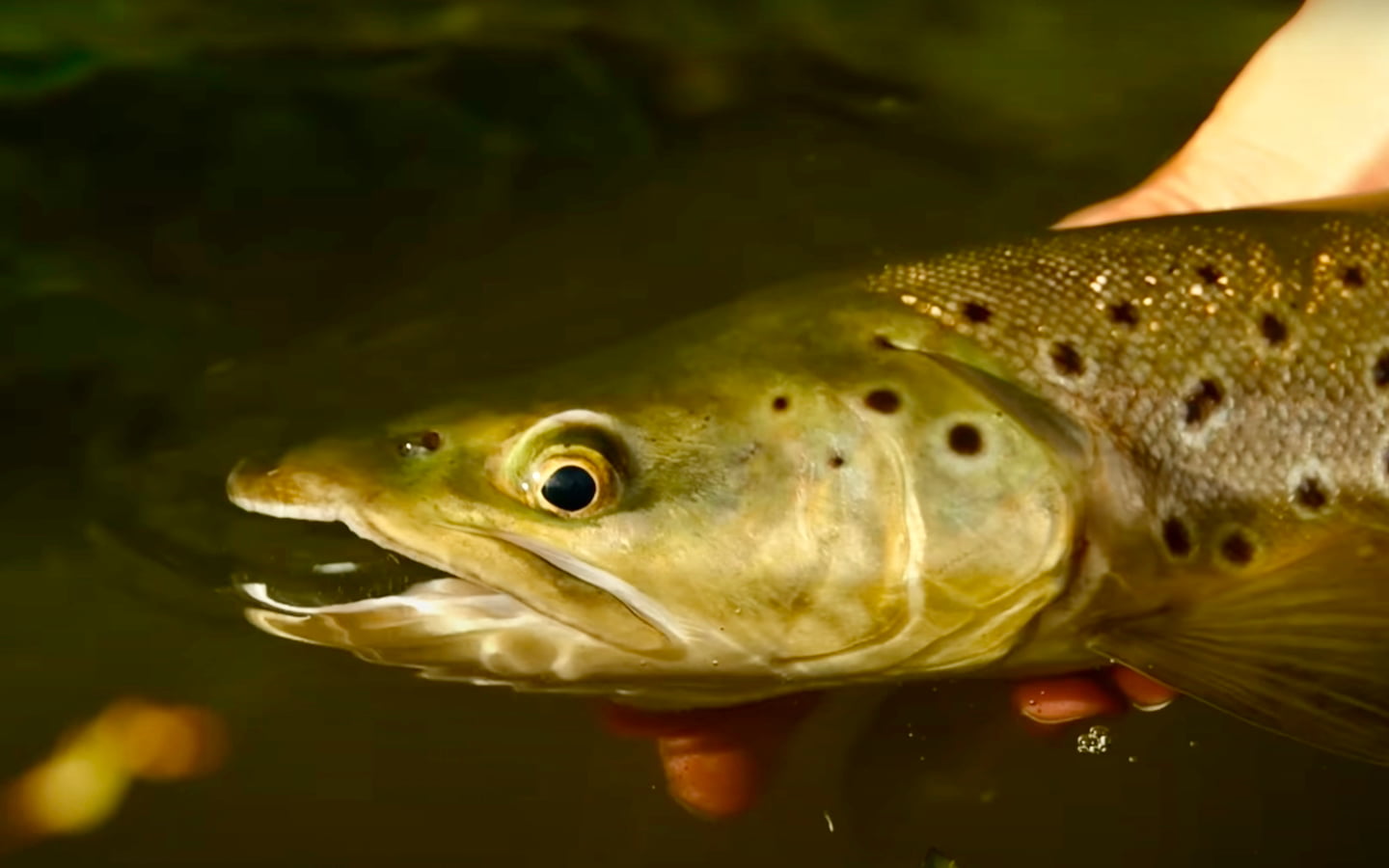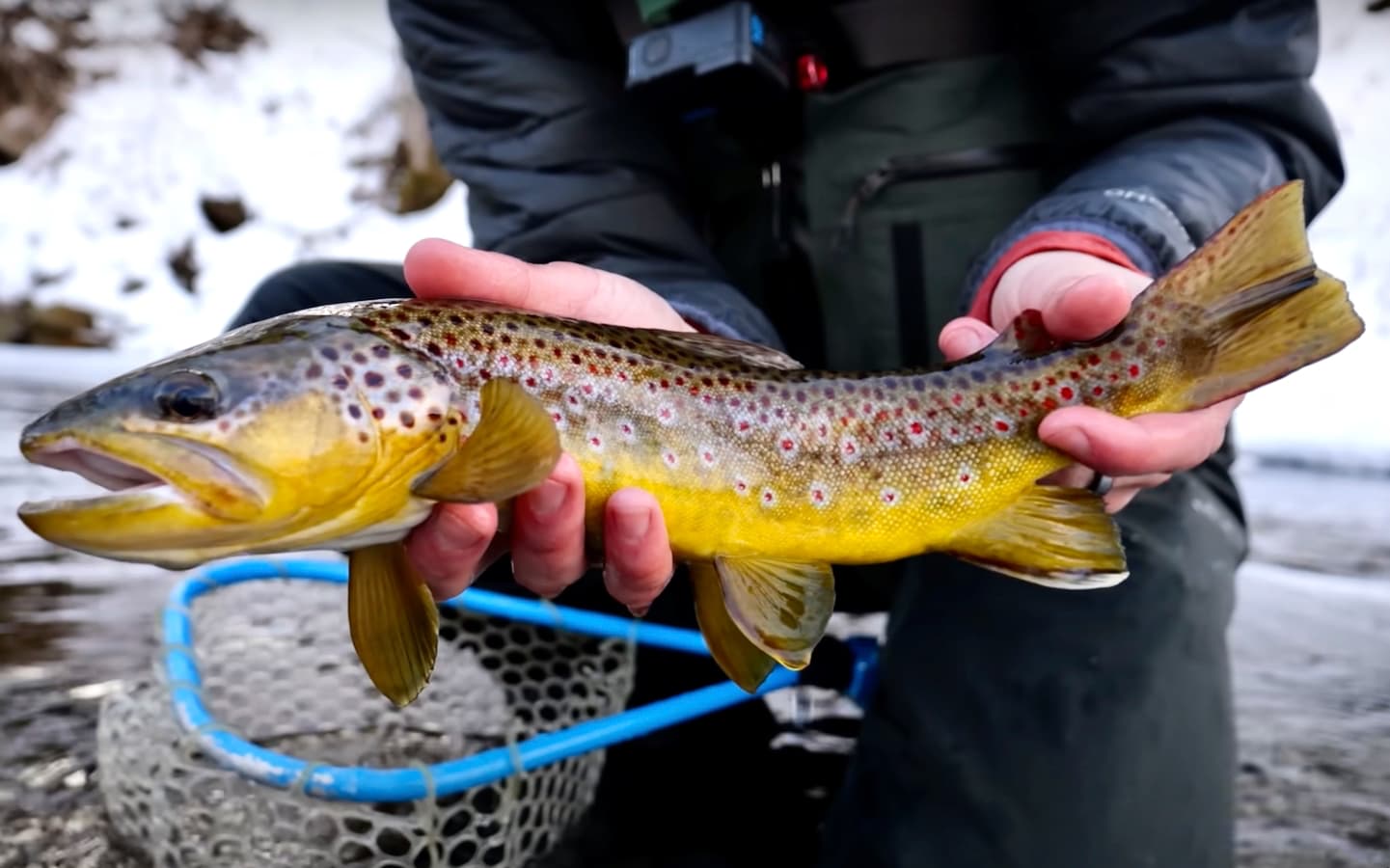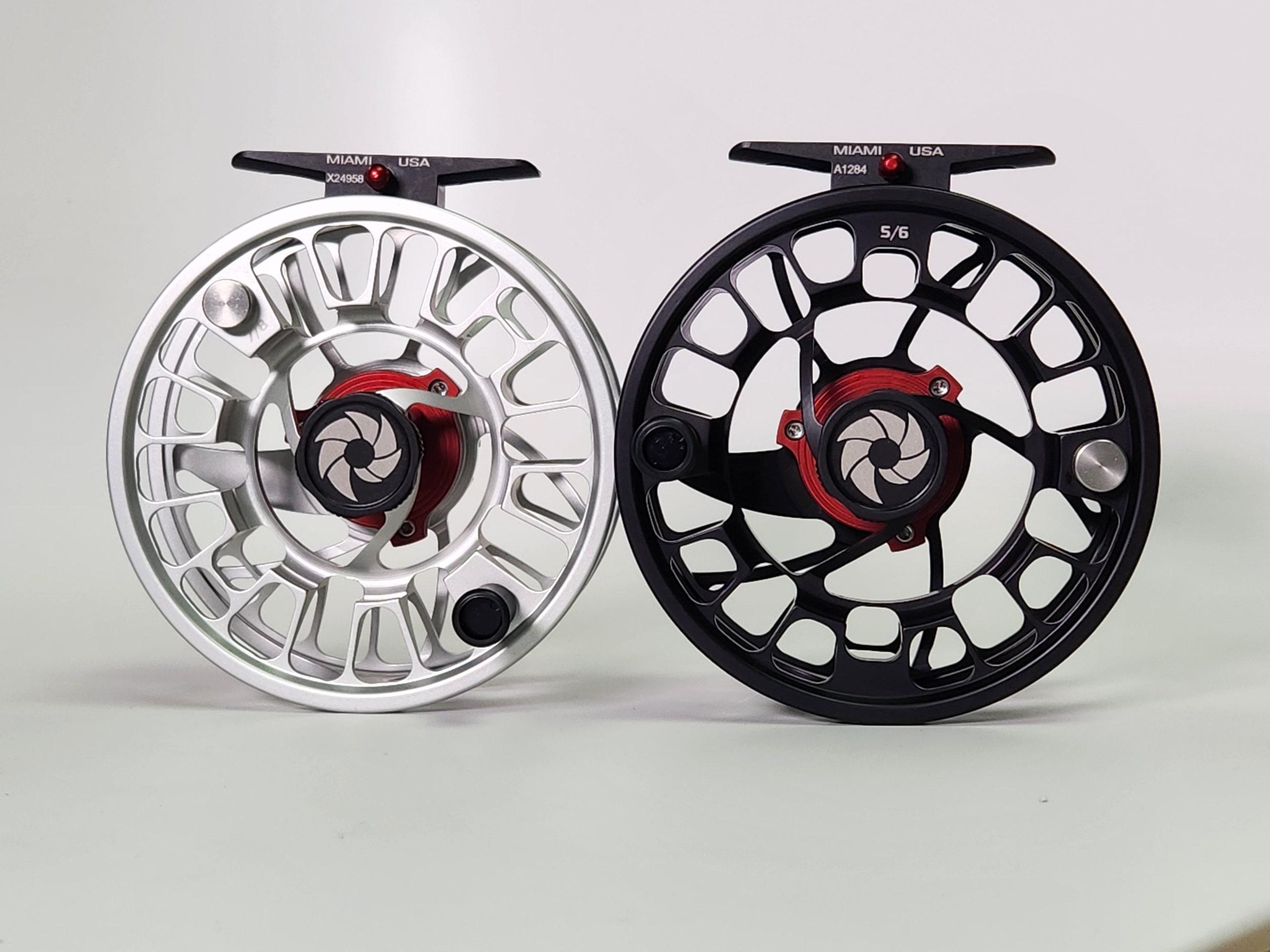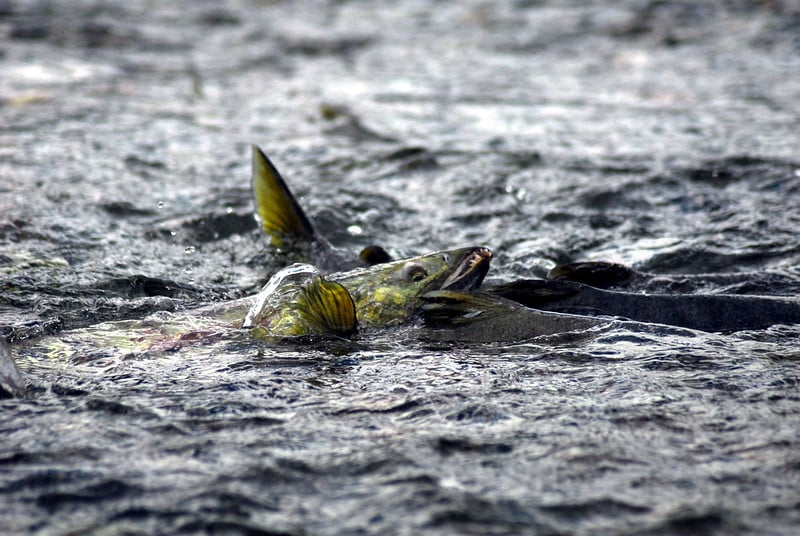Beyond the Swing

Figure 1: The straight-out method allows you to get a wet fly into a tight spot, such as a logjam, or around a bend in the stream. As you strip off line in short increments, the fly drifts a bit in the current and then line tension makes the fly describe a mini-swing that fish find irresistible.
ALTHOUGH DAVE HUGHES’S exhaustively titled Wet Flies: Tying and Fishing Soft-Hackles, Winged and Wingless Wets, and Fuzzy Nymphshelped bring on a minor resurgence of the wet fly more than a decade ago, for many fly fishers, these old-school patterns remain something of a mystery. A wet fly is not quite a streamer and definitely not a nymph, so what are you supposed to do with it? To add to the problem, we are constantly reminded that hatch-matching is the ultimate fly-fishing skill, yet many (perhaps most) wet-fly patterns don’t really look like anything you see crawling or swimming in trout streams.
However, I’ll bet that your grandpa knew all about how to fish a wet fly, and he probably took most of his trout while fishing below the surface. Indeed, there was a time when the first thing a fly fisher tied to his gut tippet was a wet fly. And those old-time patterns — such as the Cow Dung, Wet Coachman, and Pale Morning Dun — will still catch plenty of trout if you know how to fish them.
The basic, old-school technique is perfectly recognizable today: Cast across or quartering downstream, and then let the fly swing with the current. That’s the way most fly fishers fish wet flies, and it’s fine, as far as it goes. But too many anglers use wet flies in much the same way that they would fish a streamer. They blind-cast, drift, swing, and retrieve, paying little or no attention to where they’re placing the fly or what it’s drifting past. What these anglers don’t consider is that trout chase streamers because the big morsels seem worth the effort in ways that a little wet fly doesn’t. Few monster browns will charge from behind a rock to intercept a Royal Coachman five feet away.

Figure 2: To present a wet fly to a fish against the opposite bank, make a quartering downstream cast (A), and then use mends to control the speed of the drift (B). Plan for the line to come tight just as the fly is about to bonk the trout on the nose (e). The rising, "fleeing" action of the fly can trigger a strike.
The key to successfully fishing a wet fly is to put the pattern right in front of the fish. If you know how to read the water and have a reasonable command of casting, you can ensure that your offering drifts past all the prime lies in a stretch of river. You should also alter the action of the fly until you get a response. If a standard swing or dead drift doesn’t draw any strikes, try presenting the fly so that it starts to rise just as it reaches a good lie (a technique known as the Leisenring lift). Making these kinds of adjustments is the difference between fishing a wet fly and really working a wet fly. Start to pay more attention to how your fly looks to fish in specific lies, and you’ll see your catch rate rise sharply.
Straight to the Point
Sometimes, the best presentation is also the easiest. A few years ago, I was fishing a heavily pounded stretch of a famous catch-and-release river in the Northeast. The few bugs coming off the water weren’t enough to attract any trout to the surface, and the nymphs I tried produced nothing. My partner, however, was catching plenty of fish. When we took a break, I pried his secret out of him.
He was using a Cow Dung wet fly, but it wasn’t the pattern that was remarkable; it was his technique. He simply fed the fly straight downstream in the current by pulling line off his reel in four-inch strips and letting it slide out the guides. The fly danced its way down the river, and he could guide it right into the best lies by simply moving his rod tip from side to side or tossing small mends left or right (see Figure 1).
He said he had learned this simple technique as a kid, but I’ve since found references to it in fishing books dating back to the turn of the century. This was the preferred way to get a fly into snags or down to fish at the lower ends of pools. It worked then, and it works now. I’ve since found that this “straight out” technique has many applications. Here are a few examples from my own fishing experience.
I had the good fortune to fish a leased stretch of Tarryall Creek in Colorado a few years back. The water was so clear, you could see fish on the bottom from 50 feet away; problem was, they could see you, too. These trout were extremely spooky; even the gentlest delivery with a tiny fly on 7X tippet would send them scattering.
After scaring a half dozen bend pools, I decided to try snaking a wet fly around the next bend. I tied on a size 14 Pale Evening Dun wet fly, and started feeding line around the bend with short strips, which caused the fly to drift downstream briefly and then skit upstream an inch or two. I had perhaps 20 feet of line out when I felt a solid tug. A 14-inch brown had broken the ice. On the next two bend pools, I used this straight-out technique to take three more trout.

Figure 3: The Leisenring lift allows the angler to make pinpoint presentations — even in a stretch of river with conflicting currents — that mimic an emerging insect (left). The key is to first pinpoint a likely trout lie and then perform the "lift" just a few inches upstream (right).
A stream I fished in Connecticut had one very good-looking pool right where it ran under the interstate. The water was too deep to wade, and the banks were far too steep and high to walk along. I’d fished streamers and nymphs through that water countless times and had come up blank, but it looked too good not to hold any fish.
It finally dawned on me one afternoon to try feeding a wet fly down through the pool. My hunch about the water holding trout was correct — I caught a dozen fish out of the pool before I had worked all the way down to the far end. The fish were all small, averaging perhaps six or eight inches. But they were the first fish I’d taken from that water in two years of fishing it.
The straight-out method also works well for fishing under and around big log dams and blowdowns that back up a sizable pool. Getting a fly anywhere back under the thicket of overhanging branches can result in a strike from some of the biggest specimens in any trout stream. The straight-out technique gives you the best control over the fly to keep it from getting hung up, and lets you muscle a fish straight out of the debris before it can wrap your tippet around a stick.
Speed Control
In nearly all wet-fly fishing, maintaining control over the fly’s speed and position is vital. Controlling a wet fly is accomplished almost entirely with the line. You should be able to toss decent mends — either up- or downstream — in your line as needed to get the fly to speed up, slow down, or start swinging at a specific point. Some of these techniques have had fancy names attached to them — Hughes writes about the Crosfield draw, the Leisenring lift, and many more — but they all come down to mending and working the line to control the speed and position of the fly. The Crosfield draw, for example, is nothing more than throwing a downstream mend into your line to increase the line’s belly in the current and so speed the fly up — a good tactic for big, slow pools. You don’t need to know the names of the techniques, but you should know how to control your line to make the fly do what you want where you want it.
Before you make your first cast, consider the speed of the water and the various currents affecting your line. Scan the pool for likely holding water. Then imagine how you need to manipulate your line to accomplish the right drift. Remember, your main goal is to get the fly right in the fish’s face. (See Figure 3 above for a more specific perspective.) By visualizing the path of your underwater fly, you can make sure that you present it right where the fish wants it.
Fishing wet flies is not rocket science. It takes no special equipment, and fly fishers of even modest skill and experience can do it quite well. For my money, it’s far more exciting than dead-drifting nymphs under a strike indicator, and usually far more productive, too.
